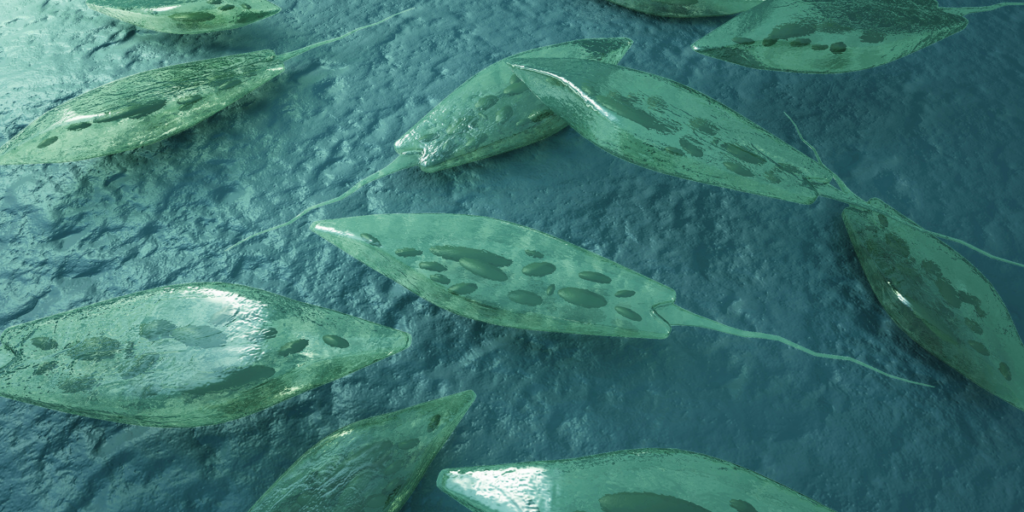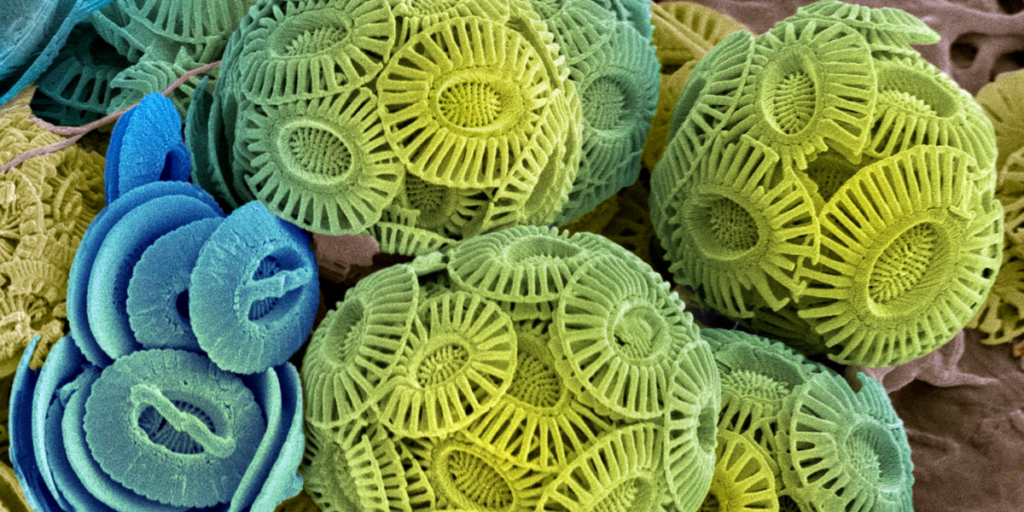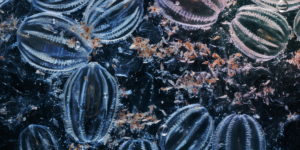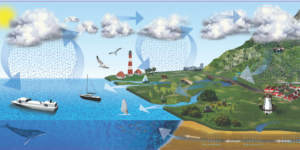The Crucial Role of Phytoplankton in Sustaining Oceanic Ecosystems
Do you know that phytoplankton is responsible for producing half of the oxygen we breathe? Yes, these tiny organisms play a crucial role in maintaining healthy ocean ecosystems.
Phytoplankton forms the basis of the marine food chain and provides food for zooplankton, small fish, and ultimately larger predators. They are also responsible for regulating climate by absorbing vast amounts of carbon dioxide from the atmosphere.
However, despite their importance, phytoplankton populations are under threat due to various human activities such as pollution and climate change. These threats can cause severe disruptions to marine ecosystems and have far-reaching consequences for our planet’s health.
Therefore, it is essential to understand the role of phytoplankton in maintaining ocean ecosystems and take necessary actions to protect them. In this article, we will explore how vital phytoplankton is for our oceans’ health and discuss ways we can safeguard their existence.
Key Takeaways
- Phytoplankton plays a crucial role in maintaining healthy ocean ecosystems by producing 50% of the oxygen we breathe, forming the basis of the marine food chain, regulating climate, and maintaining marine biodiversity.
- Pollution, climate change, ocean acidification, and microplastics threaten phytoplankton populations and can lead to the collapse of entire food webs.
- Reducing pollution through policy changes and supporting marine conservation efforts are crucial for ensuring the survival of phytoplankton and maintaining healthy ocean ecosystems.
- Ecological impact assessments and protecting their habitats are also important strategies for sustaining biodiversity in oceans.

Phytoplankton and Climate Regulation
Without phytoplankton, our oceans would be defenseless against climate change and the devastating consequences it brings. These tiny organisms play a crucial role in regulating Earth’s climate by sequestering carbon dioxide from the atmosphere through photosynthesis.
In fact, phytoplankton are responsible for absorbing roughly half of all carbon dioxide produced by human activities, making them one of the most important players in mitigating global warming. However, as our oceans become more acidic due to rising levels of carbon dioxide, phytoplankton populations may suffer.
Ocean acidification makes it difficult for these organisms to form their protective shells, leaving them vulnerable to predators and environmental stressors. This could have significant impacts on not only ocean ecosystems but also on the global carbon cycle and ultimately on climate regulation.
It’s essential that we continue to study and understand the complex relationships between phytoplankton and ocean chemistry to ensure a healthy future for our planet’s oceans and climate.
Threats to Phytoplankton and Ocean Ecosystems
You may be interested to know that pollution and climate change are among the most significant threats to phytoplankton and ocean ecosystems.
The excessive release of carbon dioxide into the atmosphere has led to extreme changes in temperature, acidity, and oxygen levels in the ocean, negatively impacting phytoplankton populations.
Additionally, pollution from land-based activities, such as agriculture and industry, can lead to harmful algal blooms that pose serious health risks for marine life and humans alike.
Pollution
Sadly, our oceans are drowning in pollutants that suffocate and poison the phytoplankton, the very lifeblood of our marine ecosystems. Pollution from human activities such as industrial waste, agricultural chemicals, and oil spills have devastating effects on the health of our oceans. These pollutants not only deplete the population of phytoplankton but also disrupt their interaction with microplastics.
The impact of pollution on phytoplankton has a ripple effect throughout the entire ocean ecosystem. As phytoplankton populations decline, so do fish populations that depend on them for food. This can have severe consequences for the fishing industry and coastal communities that rely on these resources for their livelihoods.
Additionally, microplastics can attach themselves to phytoplankton which affects their ability to photosynthesize and reproduce properly. The negative impact of pollution is clear – we must take immediate action to reduce it if we want to maintain healthy and thriving ocean ecosystems for future generations.
Climate Change
Climate change is having a significant impact on the delicate balance of our oceans, and urgent action is needed to address this issue. One of the most pressing effects of climate change on the ocean is ocean acidification.
As carbon dioxide levels rise in the atmosphere, more and more CO2 dissolves into seawater, lowering its pH level and making it more acidic. This increased acidity can have devastating effects on phytoplankton populations, which form the base of many marine food webs.
Phytoplankton are crucial to maintaining healthy ocean ecosystems because they provide food for zooplankton, which in turn feed larger animals like fish. However, as ocean acidification continues to increase, it becomes more difficult for phytoplankton to survive and reproduce.
This can lead to a decline in overall phytoplankton populations, impacting fisheries that rely on these small organisms for food. Therefore, mitigating climate change and reducing carbon emissions is necessary not only for preserving our planet’s health but also for ensuring sustainable fishing practices that support human communities around the world.
Importance of Protecting Phytoplankton
You may not realize it, but phytoplankton play a crucial role in maintaining marine biodiversity and sustaining life on Earth. These tiny organisms are responsible for producing half of the oxygen we breathe, and they form the base of the ocean food chain.
However, threats to phytoplankton populations pose a serious risk to our planet’s health and well-being. By protecting these vital organisms, we can help ensure a healthy future for our oceans and all the creatures that depend on them.
Maintaining Marine Biodiversity
Hey there, did you know that phytoplankton play a crucial role in preserving the biodiversity of our oceans? As tiny organisms that float on the surface of the water, phytoplankton provide the foundation for marine food webs. They are responsible for producing up to 50% of the world’s oxygen and absorbing about 25% of atmospheric carbon dioxide. These functions make them essential to maintaining healthy ocean ecosystems.
Here are five ways that phytoplankton contribute to maintaining marine biodiversity:
- Phytoplankton form the base of marine food chains, providing nutrients for larger organisms such as fish and whales.
- They also help regulate ocean temperatures by absorbing solar radiation and transferring heat through ocean currents.
Phytoplankton are indicators of water quality because they are sensitive to changes in pollution levels and nutrient availability.
- Some species of phytoplankton produce toxins that can harm other marine life, but many others have beneficial properties such as anti-inflammatory or antibacterial effects.
By creating oxygen-rich environments and removing carbon dioxide from the atmosphere, phytoplankton help mitigate climate change impacts on marine ecosystems.
The preservation of these tiny organisms is critical to effective marine conservation strategies and ecosystem resilience. Without healthy populations of phytoplankton, entire food webs could collapse, leading to devastating consequences for both humans and wildlife alike. So remember: every time you take steps towards protecting our oceans, you’re not just saving one species – you’re helping preserve an entire ecosystem!
Sustaining Life on Earth
As you look around at the world, you can’t help but feel a sense of unease. Something seems off, like a ticking time bomb waiting to go off. The reality is that our planet is facing numerous challenges that threaten the very existence of life as we know it.
One such challenge is the degradation of our oceans and their ecosystems. Phytoplankton plays a crucial role in sustaining life on Earth by producing oxygen through photosynthesis. They are the foundation for food webs and trophic levels in ocean ecosystems, providing sustenance for everything from small zooplankton to large whales.
Without phytoplankton, marine biodiversity would suffer greatly, leading to a ripple effect throughout the entire planet’s ecosystem. As humans depend on healthy oceans for food and recreation, it’s essential that we work towards protecting these vital organisms and their habitats.

Actions to Protect Phytoplankton
You can take action to protect phytoplankton by reducing pollution, addressing climate change, and supporting marine conservation efforts. Pollution from sources like agricultural runoff and oil spills can harm phytoplankton populations, leading to a decline in ocean health.
Climate change also poses a threat as increasing temperatures and ocean acidification can impact the growth and survival of these vital organisms. Supporting marine conservation efforts, such as establishing protected areas and reducing overfishing, can help ensure that phytoplankton continue to play their crucial role in maintaining healthy ocean ecosystems.
Reducing Pollution
Reducing pollution is crucial for ensuring the survival of phytoplankton, which play a vital role in maintaining healthy ocean ecosystems. Effective solutions must be implemented to reduce the impact of human activities on our oceans. Policy changes can help regulate industrial waste and chemical runoff from agriculture.
Phytoplankton are sensitive organisms that require specific conditions to thrive. When pollutants enter the water, they alter these conditions and put phytoplankton at risk. Heavy metals, plastics, and other harmful substances can negatively affect their growth and reproduction rates.
As a result, reducing pollution is essential for maintaining healthy populations of phytoplankton in our oceans. By implementing effective solutions and policy changes, we can work towards a cleaner environment that supports these important organisms and the ecosystems they support.
Addressing Climate Change
Hey, did you know that fighting climate change is like putting out a fire before it spreads? The longer we wait to address this issue, the harder it’ll be to control its devastating effects on our oceans and planet.
As temperatures rise and weather patterns become more erratic, phytoplankton populations are declining at an alarming rate. Here are three reasons why addressing climate change is crucial for maintaining healthy ocean ecosystems:
- Economic Impact: The fishing industry relies heavily on healthy marine ecosystems, but as the ocean becomes warmer and more acidic, fish populations decline. This not only affects fishermen’s livelihoods but also impacts the entire seafood supply chain.
- Technological Advancements: With advancements in technology, scientists can now study how phytoplankton populations are affected by climate change. By understanding these changes, we can work towards developing solutions that’ll help us protect these vital organisms.
- Emotional Connection: We all have a connection to the ocean whether we realize it or not. It provides us with food, recreation, and inspiration. Addressing climate change is essential to ensure that future generations can enjoy the same benefits we do today.
It’s clear that addressing climate change is crucial for maintaining healthy ocean ecosystems. While there may be economic costs associated with implementing solutions to combat this issue, the cost of doing nothing far outweighs any short-term losses. Through technological advancements and emotional connection to our planet’s natural resources, we can work towards safeguarding our oceans for generations to come.
Supporting Marine Conservation Efforts
Supporting marine conservation efforts is essential for preserving the diversity and beauty of our oceans. Various conservation strategies have been implemented to protect ocean ecosystems from exploitation, degradation, and destruction. These include establishing marine protected areas (MPAs), regulating fishing practices, reducing plastic pollution, and mitigating climate change.
Ecological impact assessments are conducted to determine the effectiveness of these conservation efforts on phytoplankton populations and other marine organisms. Phytoplankton play a crucial role in maintaining healthy ocean ecosystems as they serve as the base of the food chain for many marine animals. Therefore, protecting their habitats is vital for sustaining biodiversity in our oceans.
By supporting marine conservation efforts, we can ensure that future generations can continue to enjoy the wonders of our precious oceans while safeguarding this critical resource for all life on Earth.
Frequently Asked Questions
Can phytoplankton be used as a source of food for humans?
Imagine a tiny world where the ocean’s greenery is packed with nutrition. Phytoplankton, rich in vitamins and minerals, can be used as a food source for humans. Its nutritional value is comparable to kale and spinach.
How do scientists study the populations and behavior of phytoplankton in the ocean?
To study phytoplankton in the ocean, scientists use sampling methods like net tows and sediment traps. They also use remote sensing techniques to track changes in chlorophyll levels, which indicate changes in phytoplankton populations and behavior. These methods help us understand how these tiny organisms impact our oceans.
What are the potential long-term effects of climate change on phytoplankton and ocean ecosystems?
Did you know that ocean acidification caused by climate change can reduce phytoplankton growth by 20%? Phytoplankton plays a crucial role in carbon sequestration, and their decline could have catastrophic effects on ocean ecosystems.
Are there any natural predators of phytoplankton, and how do they impact their populations?
Predators of phytoplankton include zooplankton, jellyfish, and some fish species. These predator-prey dynamics play a critical role in maintaining ecological balance in the ocean. Understanding these relationships is key to preserving healthy ocean ecosystems.
How do ocean currents and water temperature affect the distribution and abundance of phytoplankton?
As the saying goes, “go with the flow.”Ocean currents play a vital role in transporting nutrients and distributing phytoplankton blooms. Water temperature also impacts phytoplankton diversity, affecting their abundance and distribution. Understanding these factors is key to maintaining healthy ocean ecosystems.
Conclusion
Congratulations! You now understand the crucial role that phytoplankton plays in maintaining healthy ocean ecosystems. These microscopic organisms aren’t only responsible for producing oxygen and regulating climate, but they also serve as a foundation of the marine food web.
However, as we’ve discussed, there are several threats to phytoplankton and their habitats, including pollution, overfishing, and climate change. It’s imperative that we take action to protect these vital organisms by reducing our carbon footprint, supporting sustainable fishing practices, and implementing effective marine conservation policies.
In essence, phytoplankton serves as a symbol of hope for the future of our oceans. By recognizing their importance and taking necessary actions to preserve them, we can ensure the health and prosperity of our planet’s most precious resource- the ocean.
Let’s work together towards a sustainable future where all life on earth thrives in harmony with nature.
We would like to thank our sponsor Rapid Fix Garage Doors for supporting our website and if you need a quality garage door service contact them today.




